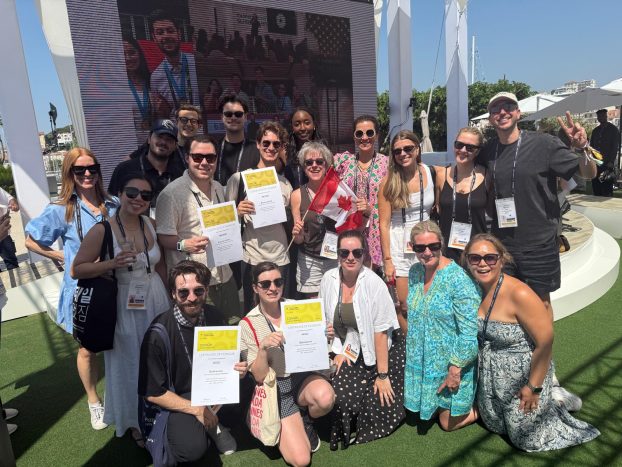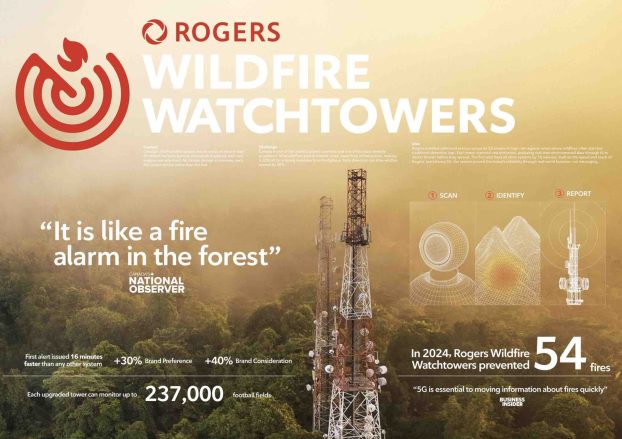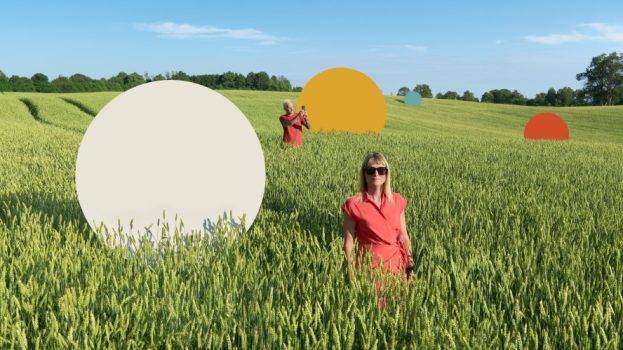Pay them back. Those three little words sum up the philosophy with respect to newspaper advertising at Cossette Communication-Marketing in Toronto.
If you want your message to be the one that readers remember, out of all the many newspaper ads competing for their attention, then you’ve got to reward them for taking notice, says Jim Garbutt, the agency’s vice-president and creative director.
Consider, for example, some of the recent work that Cossette has done on behalf of telecommunications clients Maritime Telegraph and Telephone Company (part of the Aliant group of Atlantic Canadian telcos) and Bell Mobility.
If ever there was a category that called for something a little out of the ordinary, it’s telecommunications – a field crowded with players whose brand positioning and product offerings are, to the average consumer, more or less indistinguishable. How to strike a chord with newspaper readers in this kind of competitive environment?
Well, a paper bag did the trick for MTT.
To promote its new Mpowered PC high-speed Internet service, the company had the bag inserted into Halifax-area newspapers back in October. Copy on the front identified it as an ‘Mpowered PC Hyperventilation Recovery Device,’ and encouraged consumers to bring it along for their own ‘safety’ when they visited the local electronics dealer for a demonstration of the service.
‘It not only communicates the idea in a very interesting way, as a piece that basically falls out of the newspaper,’ Garbutt says. ‘It’s also memorable, and gives something back to the consumer – a smile, and perhaps even a paper bag they can use for their lunch.’
You couldn’t pack a tuna sandwich in the newspaper ads for Bell Mobility’s My Time $35 package, but they too succeeded in getting the message across in an imaginative fashion.
My Time targets young professionals with active lives outside of the office, offering unlimited calling on weekends, plus 150 minutes during the week, for $35 a month. The ads, which ran in the business pages of The Globe and Mail and the National Post in late spring and again during the fall, took the form of mock appointment notices.
Each one in the series featured a head shot of a suit-clad young executive, sporting the headgear associated with his or her weekend hobby – ski goggles, a scuba mask and snorkel, and so on.
‘TL Enterprises is pleased to announce the appointment of John Dunn to the position of Manager Special Operations,’ read one, under the image of a guy in jacket, tie and goalie’s mask. ‘His responsibilities will include managing things – the special things. However, he didn’t want to talk about his new job. All he wanted to talk about was hockey… Talk, talk, talk. That must be why he likes Bell Mobility’s My Time $35…’
The ads – which all concluded with the campaign tagline: ‘Get ready for the weekend’ – drew little attention to themselves. In fact, they didn’t even include the Bell Mobility logo. So when consumers read through the ‘appointment notice’ and discovered that it was actually an advertising message in disguise, they felt rewarded, Garbutt says.
The newspaper advertising was just a small add-on to the overall My Time campaign, which also featured a series of 15-second television spots. But it created a significant buzz, according to Alan Flint, vice-president of marketing communications with BCE Mobile Communications, parent company of Bell Mobility.
‘For a pile of small-space ads, the response blew us out of the water,’ he says. ‘We had comments from customers who said they found it quite amusing and inviting. It had a personality that fit perfectly into where we’re at.’
Flint says it takes real co-operation between agency and client for innovative advertising like this to happen – ‘for the agency to come up with some crazy ideas, and for the client to listen to them.’
When it comes to newspaper advertising, Garbutt says, clients are becoming more cognizant of the need for creative thinking.
It’s a crowded environment, and advertising must work hard – not just to communicate an attractive price point or a persuasive retail message, but to differentiate itself from all that surrounds it.
Solid relationships between advertisers and publishers also help. And to their credit, Flint says, newspapers have become increasingly co-operative, not to mention more proactive about coming forward with original creative ideas.
Also in this report:
– Launch of Post good news for advertisers: Upstart daily has jump-started the industry, prompting offers of better rates, bonus ads and new loyalty programs p.NP3
– Stop the presses: Dailies are changing: No longer acting as simple order-takers p.NP4
– Picture perfect: It’s obvious that visually driven creative works well in newspaper. So why don’t more advertisers use it? NP5
– Savingumoney.com builds awareness offline: Coupon portal uses newspapers as linchpin of media strategy p.NP7
– Cadillac takes the long view: Used frequency of newspaper creatively by telling a different story every week p.NP10
– Edmonton Journal: Time for a change: Daily goes for a facelift p.NP10
– Whistler taps fast turnaround times: Newspaper lets ski resort react quickly to changing circumstances p.NP13
– Talvest co-brands funds with FP Index: Helped Montreal financial services provider to crack Ontario market p.NP14




























